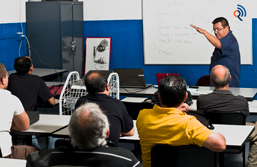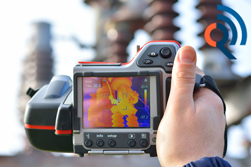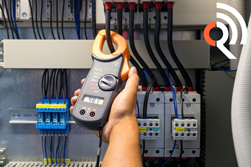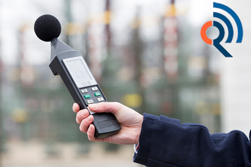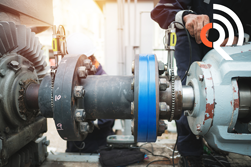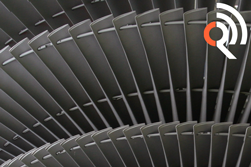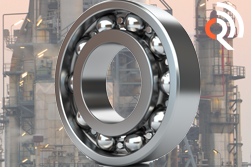Consulting
Guarantee of Service Excellence
Quest Reliability is driven to discover and deliver machine insights and innovations that help to improve your machine conditions. We offer a wide range of solutions that benefit operators, engineers, OEMs and Employers. We are committed to providing extraordinary service to all customers and back up this service with our Guarantee of Service Excellence program. Every consulting work is important to us, and we promise to respond to any queries raised by our customers.We acquire discrete data that aid in the diagnosis or detection of machinery faults, monitor the progress and mitigate the problems. We have specialized expertise in Asset Condition Monitoring, Reliability and Precision Maintenance.
We develop competitive engineers at our innovative learning centre and providing field training enables us to deliver the best results at site.
As per job requirement, we deploy accredited certified engineers varying from ISO Category I to III to prepare a database, inspect machines, collect data, prepare a preliminary report at the site, and submit a detailed analysis report within the prescribed schedule. Our experts carry a valid certification wallet card along with the company employee ID, which makes sure that we deploy the right person for the required job.
Analysts who are certified and employed by our company is competitive in executing the job as per standard. Analysts competency as follows:
Category I Analysts
Certified analysts will have a good understanding of the fundamentals. They will understand how to take the right single-channel measurement and the importance of repeatability. They can compare vibration measurements against pre-established alert settings, identify errors in data and transfer data to a computer-based system. They will also be able to report visual observations of equipment condition.
Category II Analysts
In addition to Category I analysts knowledge and capability, Category II analysts can define route data collection measurement and use the basic principles of signal analysis to define acquisition and analysis settings to collect data. The analysts can also perform single-channel impact tests to determine natural frequencies, evaluate test results from routine Analysis and acceptance tests, diagnose common faults and recommend basic corrective actions.
Category III Analysts
In addition to Category I & II analysts knowledge and capability, Category III analyst are qualified to design, establish and manage routine condition monitoring programs, evaluate alarm sets write work procedures, specify vibration acceptance testing procedures. They are also able to initiate and validate corrective actions, recommend restrictions to machine operations and direct, when necessary, alternative condition monitoring technologies to verify or investigate issues raised.
myQR:
Knowing your reports helps you, and with our expert team assist, you would understand what's best of your machine's health condition to plan maintenance activities. We provide a unique user I'd to access the reports and machine condition data that you can view all the information's like analysis reports, and trends in our myQR® Web App. This allows you to quickly and securely see the results in the same place as your other essential data is available and share the results across the organization for planning and maintenance of assets.
We prepare a detailed analysis report along with data trend to present information in a clear and understandable format. Our one-page summary report offers a quick overview of the most critical machines found with summarized comments and recommendations. Once customers receive the reports, they can discuss with our team to understand the priorities and plans, and the user can update corrective maintenance jobs in the comments section so that our team would follow up and review the machine condition in the next visit.
Vibration Analysis Services:
Vibration Analysis is a proven technology used for identifying and preventing equipment defects. As per criticality of the equipment, we plan the monitoring schedule for critical and non-redundant pieces of equipment monthly based data collection is the best way to predict the condition. Route based Vibration Analysis approach is the best way to monitor and analyze the data. We collect vibration data as per the application of equipment, and also we add complementary technology information such as Temperature, Oil sampling, Ultrasound and operational data to analyze unforeseen failures.
Vibration Analysis is an instrumental technology in identifying the following machinery faults:
- Unbalance
- Misalignment
- Rotating and Non-rotating Looseness
- Resonance
- Bearing defects
- Beat Vibrations
- Excessive loads and Rubs
- Gear Box defects
- Vane/ Blade pass frequencies
- Electric Motor defects
- Problems of belt-driven Machines
- Process related influences such as cavitation
Thermography Services:
Infrared thermography is a Non-Destructive Test, and the technology provides an excellent complement to vibration analysis which detects surface heat abnormalities emitted from an object and converts into temperature scale. It displays the image of heat distribution which allows us to see a thermal radiometric image.
The following are the few applications which can be detected by performing Infrared Thermography:
Electrical Applications- Unbalanced loads
- Poor connections
- Deteriorated or damaged insulations
- Bearing Lubrication problem/ Bearing defect in last stage
- Leak Detection
- Coupling Damage/ Severe Misalignment between drive and driven.
- Missing Insulation / refractory material
- Inspection of Refractory lined vessels and pipping system
Motor Current Signature Analysis Services:
Motor Current Signature Analysis is extensively used to diagnose problems in AC Induction motors by using Current clamp. Flux, Temperature and current data are used to identify motor-related electrical faults. It is performed online without any production interruption, which also helps to monitor regularly. It is always great to combine technologies to pinpoint the problem. In this case, we can combine both vibration analysis and MCSA to detect the defects with high accuracy levels.
The following are the few defects that can be identified by performing MCSA:
- Broken rotor bars
- Stator winding shorts
- An uneven air gap between stator and rotor
Ultrasound Testing Services:
Ultrasound is sound waves with frequencies higher than the upper limit of human hearing. Ultrasound technology is an excellent supplement to any existing condition monitoring program, but can also be useful on its own as a small scale predictive maintenance tool. The frequency limit chart as follows:
- Sub-Sonic: Below 20Hz
- Sonic: 20Hz to 20,000Hz
- Ultrasonic: Above 20,000Hz
Ultrasound technology is a selective method that identifies mechanical and electrical faults at an early stage with great accuracy in both high & low-speed pieces of equipment. Friction in moving parts generates Ultrasound, which can be detected by ultrasonic testing. Ultrasound testing will be used for flaw detection, airborne and structure problems.
Air borne Problems:- Leak Detection
- Electrical Inspection like Arcing, Tracing and Corona
- Bearing Inspection
- Steam Traps & Values
Particularly for slow speed bearings ultrasound is the best technology to predict bearing failure much earlier than any other technologies that are present available. It also helps you understand the lubrication condition, which helps to improve the lifetime of the bearings by properly lubricating it.
Laser Alignment Services:
Laser Alignment (Shaft to Shaft) is a process of making two shafts co-linear. Misaligned shafts are one of the most significant contributors to plant breakdowns, and it has considerable risk and cost to production along with safety issues. By performing Laser alignment, the machines will more be more reliable in less amount of time which leads to an increase in profitability.
Benefits of performing Laser Alignment:- Less stress on seals, couplings and bearings
- Reduces power consumption
- Precision alignment with less amount of time compared to dial gauge
- Increases the reliability of the equipment's
- Low maintenance expenses due to the reduction of spare parts usage
In-situ Dynamic Balancing Services:
This also is called as On-Site Dynamic Balancing, the most economical way to correct the imbalance in machines under operating conditions. If the Impellers are balanced in the workshop, it is expensive and time taking process still it needs to be balanced as per operating conditions. The purpose of balancing machines under operating condition is to reduce vibrations, strain, bearing forces and shaft deformation to acceptable levels. In-situ Dynamic Balancing will be performed by using the latest equipment's, which tells you both the position and weight of the correction weight with high accuracy. We follow ISO 1940-1:2003 Balancing grades as per the client's requirement. At Precision balancing, we exceed these standards, and we offer G2.5 grade balancing in most of the cases.
We provide In-situ Dynamic Balancing for Single Plane, Dual Plane and 3 Run Method (This is used when the phase is unsteady due to structure vibrations or where it is tough to collect phase readings).
Benefits of performing In-situ Dynamic Balancing:
- Decrease fatigue load on the bearings and increase its life
- Reduced vibrations and noises
- Reduced energy costs
Root Cause Analysis:
Root Cause Analysis is an essential part of an integrated Asset Condition Monitoring and Reliability improvement program. By applying a structured, analytical thinking process to resolve operational and maintenance problems that impact an organization's ability to meet strategic objectives. If your plant equipment is failing, assets and operations are underperforming. Quest Reliability team can help you to resolve such complex problems by performing root cause analysis.
Scope of work:- Identifying the problem
- Performing RCA
- Submitting the solution to the problem
- Detailed report documentation

